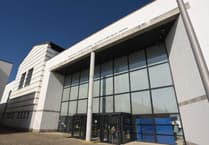Between March 1 and March 22, 105 flights (17%) to or from the island were disrupted.
There were 62 cancellations and 43 delays, in comparison to no cancellations in January, according to the Civil Aviation Authority.
A spokesperson for the Department of Infrastructure said: ‘It is important to note that cancellations and delays can be caused by a variety of reasons, including weather at Isle of Man Airport, but also the weather and other operational factors elsewhere in the network as well as with the airline operators themselves.
‘When ILS is not available, the airport has a range of alternative instrument approaches published for each runway including Non-Directional Beacon, VHF Omnidirectional Range, Distance Measuring Equipment and Surveillance Radar Approach.
‘These approach types are classified as non-precision approaches (NPA), which is a technical term to describe approach types that do not provide pilots with electronic glideslope information.
‘NPAs require pilots to make their decision to land at a higher altitude (and therefore earlier in the approach) to ensure safe obstacle clearance, which in poor weather, when there is low cloud and, or poor visibility, can lead to missed approaches more commonly than when flying ILS.
‘Work to maintain, and ultimately replace, all aspects of an airport’s communication, navigation and surveillance equipment is an ongoing process which will occasionally necessitate the temporary withdrawal of facilities and approach types.
‘When considering only meteorological data, the summer months of June, July and August have a higher risk of low cloud and poor visibility due to the warmer moist south-westerly airstreams at that time of year.
‘The airport also had to consider other factors outside of weather events, such as Christmas, Easter, TT festival and the summer tourist season, all of which see an increase in flights, routes and charters to direct destinations within Europe. Conducting the work during these months was deemed commercially unacceptable.’
The airport says that it consulted with airlines, updating them on the schedule, impacts and contingencies.




